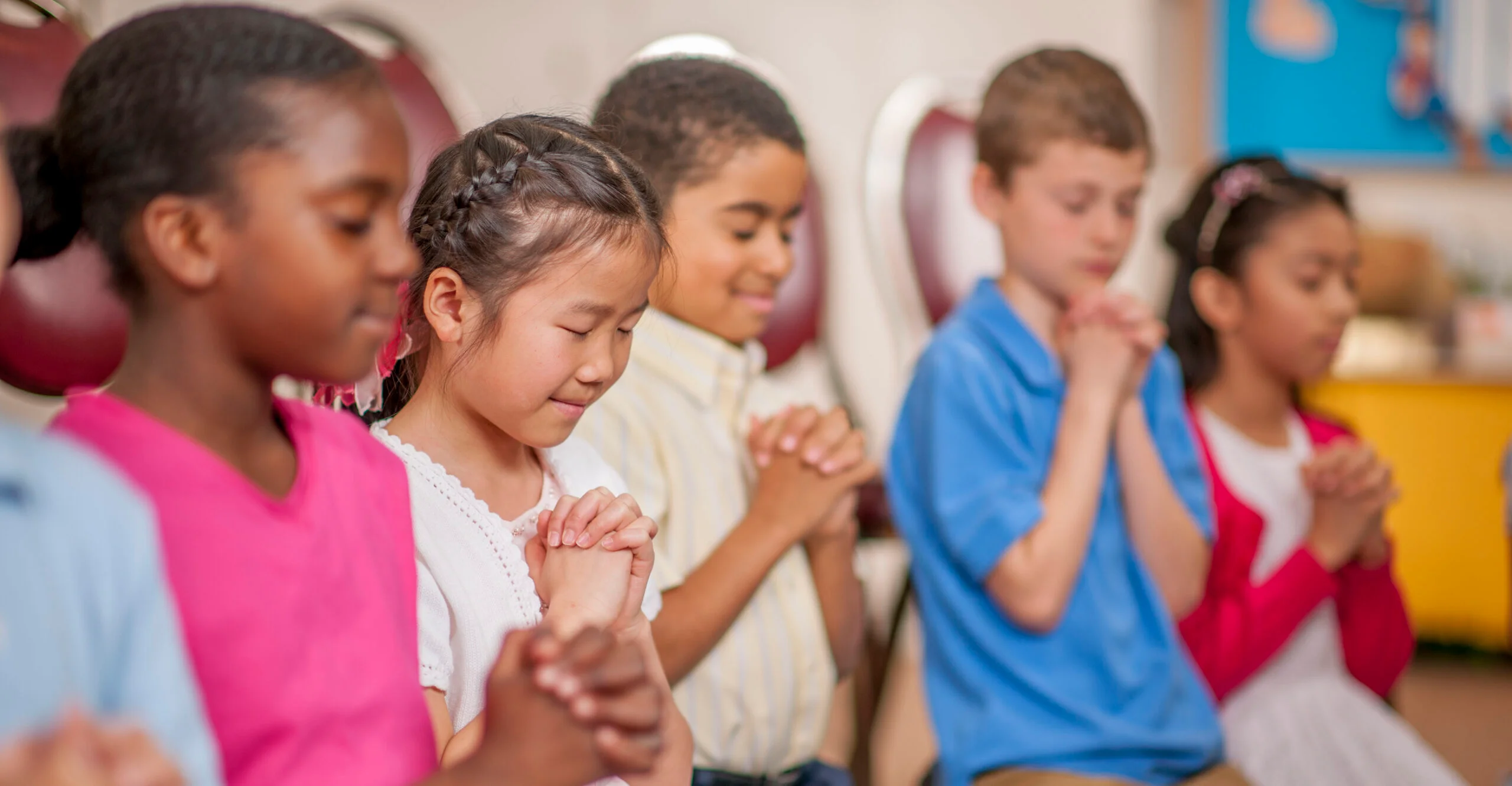By Sarah Holliday The Washington Stand
As some states struggle to display the Ten Commandments in public school classrooms, recent surveys indicate that a majority of Americans support teachers leading students in prayer, specifically referencing Jesus Christ.
Conducted from July 17, 2023, to March 4, 2024, the Pew Research Center surveyed 36,908 American adults about these key issues. The findings, released on Monday, revealed that “just over half of U.S. adults (52%) say they favor allowing public schoolteachers to lead their classes in prayers that refer to Jesus,” with 27% expressing “strong” support. Conversely, 46% either oppose or “strongly” oppose the practice, with notable variations across states.
Support is particularly high in Southern states. Mississippi leads with 81% in favor, followed by Alabama and Arkansas at 75%, Louisiana at 74%, and South Carolina at 71%. Most Midwest states also back the practice, with approval rates ranging from 53% to 65%. However, Pew noted, “In 12 states and the District of Columbia, more adults say they oppose allowing teachers to lead their classes in prayers that refer to Jesus than say they favor it.” Sixteen states remain relatively neutral.
Beyond geographical differences, the data also showed political divides. As The Christian Post reported, “With the exception of North Carolina and Georgia, the states where support for explicitly Christian school prayer was the highest voted for Republican President Donald Trump by double digits in the 2024 presidential election.”
There was also a distinction between what the researchers dubbed “generic” prayer versus “Christian” prayer. “Nationwide,” Pew added, “a slightly larger share of Americans say they favor allowing teacher-led prayers referencing God (57%) than favor allowing teacher-led prayers specifically referencing Jesus (52%).”
In a similar vein is another survey, conducted by The Associated Press (AP) NORC Center for Public Affairs Research. Of 1,158 U.S. adults, they found 58% believe “religious chaplains providing support services in public schools should be allowed.” According to the poll, “Republicans are more likely than Democrats to think religious chaplains providing support services in public schools (70% v. 47%), teacher-led prayers (60% v. 29%), and mandatory school prayer periods (49% v. 27%) should be allowed.”
AP went on to note, in relation to its findings, that while “about 6 in 10 U.S. adults say that religious chaplains should be allowed to provide support services for students in public schools … most do not think teacher-led prayer or a mandatory period during school hours for private prayer should be allowed in public schools.”
These findings raise the questions: What role should prayer or chaplains play in public schools, and will these survey results make a difference in policy? Arielle Del Turco, director of the Center for Religious Liberty at Family Research Council, told The Washington Stand, “For too long, the Left has dictated a narrative that said prayer and recognition of God must be pushed out of the public square to secure the ‘separation of church and state.’ This is a false narrative, and it’s good that more Americans are rejecting it.”
In his own analysis, Joseph Backholm, Family Research Council’s senior fellow for biblical worldview and strategic engagement, observed that the regional and political differences in Pew’s poll align with broader religious trends. “More religious parts of the country are more comfortable with the idea of prayer in schools,” he told The Washington Stand, while “Democrats, who are generally less religious, are less inclined to want prayer in schools.”
On the concept of chaplains in schools, Backholm noted their value, drawing parallels to their role in the military. “It’s helpful to be counseled by people who share your view of reality,” he said, suggesting that “children in school would benefit in the same way” by receiving guidance that reinforces common values.
Looking ahead, Backholm expressed skepticism about whether these poll results will lead to policy changes. “I’m not sure these poll results will make any difference in what happens in schools,” he said, “but it is further evidence of how awkward our current one-size-fits-all education system is.” For Backholm, “it’s further evidence that we do not generally share the belief that we are one nation, under God, or the idea that we are obligated to submit to His plan for humanity.”
Ultimately, he asserted, this is all “because we don’t agree on those things,” nor do we “agree about what the outcome of education should be.” What that means, Backholm explained, is that “putting everyone in the same system guarantees conflict, and we’re seeing plenty of that. But having chaplains does seem to be a way to recognize and honor those differences.”
As debates over religion in public schools continue, these surveys underscore a growing openness to faith-based practices in education. And as Del Turco concluded, “It’s encouraging to see that Americans are increasingly recognizing the need for God in the public square, including in education.”
Originally published by The Washington Stand
